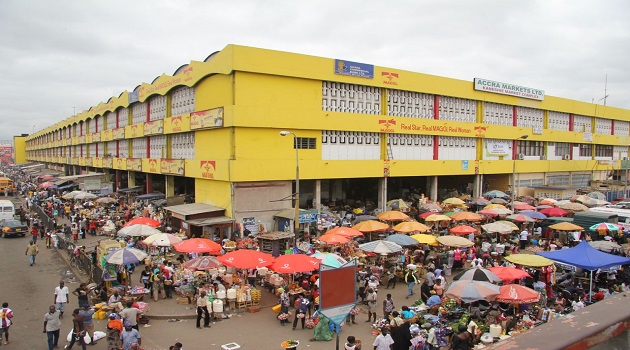
Africa is home to a world of diverse Animal Genetic Resources (AnGR) for food and agriculture which are essential for Africa's food security, and contribute to livelihoods of millions of people within and beyond the continent.
The African Union Inter-African Bureau for Animal Resources (AU-IBAR)'s report on the State of Farm Animal Genetic Resources in Africa launched in Nairobi last month (June, 2019) indicates that the livestock sector in Africa contributes from 30% to as high as 80% in some countries of agricultural Gross Domestic product (GDP) and has the potential to deliver both the agricultural-led growth and the socioeconomic transformation as envisioned in the June 2014 African Union (AU) Malabo declaration on Accelerated Africa Agriculture Growth and Transformation for shared prosperity and improved livelihoods.
Livestock contribute significantly to the continent's food and nutritional security, and economy through intra-African and global trade. In addition, the purposes of raising livestock goes beyond their products and include other significant roles such as savings, insurance, cyclical buffering, wealth accumulation and diversification, as well as various socio-cultural and traditional roles, some related to the status of their owners. Consequently, domestic livestock production is crucial for sustainable agricultural production systems and for future food security and poverty alleviation in many African countries including Ghana.
Additionally, demand for animal products is expected to increase due to population growth, higher incomes, increased urbanization, and change in dietary preferences justifying the need for increased production. For instance, livestock experts projected per capita consumption of livestock products to increase for meat from 14 kg in 2005/07 to 26 kg in 2050 and for milk 30 litres in 2005/2007 to 64 litres in 2050; while total consumption for meat was projected to increase from 11 million tons in 2005/07 to 35 million tons in 2050 (+218%) and for milk from 32 million tons in 2005/07 to 83 million tons in 2050(an expected increase of 159%).
In recent years, agriculture in Africa generally, and animal agriculture in particular, has been at the crossroads. We are all witnesses to persistent food shortages arising from rapidly increasing human population, amidst the inability of the continent to significantly increase productivity. This is being compounded by a host of other trends: globalization, agricultural policy and associated impacts particularly on small producers with limited abilities to compete in input and output markets, urbanization and the aging farming community, climate change and its complex relationships with crop and animal agriculture, and low investments in agriculture. Globalization, rapid population growth, urbanization, indiscriminate crossbreeding, poaching and other human interference, coupled with the ever-increasing demand for foods and products of animal origin, have negatively exerted pressure on the animal genetic resources.
This has led to a rapid decline of the biodiversity of animal resources and posed a challenge to the relevant international, regional and national bodies on how best to protect animal genetic resources. Additionally, climate change remains a major threat to the viability and sustainability of livestock production systems. Immediate past Director General of the Food and Agriculture Organization (FAO), Dr. Jose Graziano Da Silva of Brazil was spot-on when he declared in 2016 that "Climate change is no longer a future threat to agriculture and food production... .. because it is already affecting current agriculture and food production and often in deleterious ways... ..'.
For instance, if the temperature humidity index (THI) exceeds the species thresholds significant declines in feed intake, milk production, and fertility occur whilst increased respiration rates also contribute to rumen acidosis. Heat stress can reduce productivity of pastures, feed intake, growth, production, reproduction, welfare, and health of farm animals whilst in dairy cows, conception rates in artificial insemination can vary from 55% during the months of low temperatures and humidity, to less than 10% during the months of high temperatures and humidity. Projected future increases in temperature and humidity could thus have significant negative implications on livestock productivity.
It is expected that by 2050 dietary shifts will result in the consumption equivalent of about 11.5 billion people at 2009 diet levels with demand for livestock products in sub-Saharan Africa increasing several folds. The trend of increased demand is currently not matched by increase in productivity within Africa. Yet, this growing demand for livestock products presents an opportunity for the continent: in the form of contribution towards economic growth of African nations, as well as to the resilience and productivity of producers' livelihoods, and to the food security of the continent.
However, unmanaged increases in livestock production could also result in increased pressure on natural resources (particularly water and land), increased levels of greenhouse gas emissions, and the potential for more people to contract zoonotic diseases.
Furthermore, smallholders in mixed crop-livestock farming systems will continue to be the main producers of ruminant (cattle, goat and sheep) products until 2050. For monogastrics (such as chickens and pigs), most of this expansion will be through intensive production systems. While the smallholder will remain critical in dairying and chicken sub-sectors in Africa, livestock development strategies and plans are currently not being intentional and deliberate in addressing some of the key challenges facing value chains in which smallholders operate.
Key issues to address include sustainable government policies, access to inputs - including land, financing, appropriate genetics, feeds, and animal health services as well as markets. Many countries in Asia and South America have gone (or are going) through some of these phases of agricultural development, and it is clear that a combination of use of both on-farms and off-farm technological and institutional innovations from both the North and the South could be adapted to contribute to addressing some of the biggest challenges of Africa's livestock agriculture.
We are grateful to organizations such as the AU-IBAR, International Livestock Research Institute (ILRI), Food and Agricultural Organization of the United Nations (FAO) and other partners which have supported characterization, sustainable utilization and conservation of animal genetic resources in sub-Saharan Africa through various programmes and projects. Ghana over the years has been a beneficiary of some of these projects which have helped built both human and institutional capacity building.
The All African Society on Animal Production (AASAP) in conjunction with its local counterparts, the Ghana Society of Animal Production (GSAP) and Ghana Animal Science Association (GASA) under the auspices of the Ministry of Food and Agriculture (MoFA) invites all stakeholders to the 7th All Africa Conference on Animal Agriculture (AACAA) to be held at the Accra International Conference Centre, Ghana from Monday July 29 to Friday August 2, 2019. The 7th AACAA (www.aacaa7.org) provides a unique platform for stakeholders - professionals and livestock industry practitioners - to get together and share views on issues germane to animal agriculture.
The AACAA is held every four years in one African country and the theme of the 7th AACAA is: Innovations to Harness the Potential of African Animal Agriculture in a Globalizing World. With a focus on the animal agriculture (including aquaculture), the 7th AACAA will provide opportunity for research and development stakeholders of animal agriculture in Africa to discuss the current as well as emerging opportunities and challenges arising from these major trends and suggest potential actions to harness the opportunities and to address them.
In particular students of animal agriculture and emerging industry players will have a unique opportunity to find innovative solutions to some key challenges affecting animal agriculture in Africa. The conference will also examine how the continent's animal agriculture can increase its private sector engagement - through public-private sector partnerships. In this context the conference will examine ways to leverage private sector investments through strategic national, bilateral and multilateral financing of livestock and fisheries/aquaculture research and development that also target youth and women - whose engagement represents one of the major unexploited opportunities for the continent.
We in Ghana are happy for the opportunity to host this memorable conference, the first time a country in West Africa is hosting the event. All stakeholders are invited to fully participate to take advantage of the innovative strategies and collaborative opportunities the 7TH AACAA offers. This is indeed the time for all of us to congregate and share best practices and lessons learnt in our quest for a more innovative approaches and opportunities to secure the future of animal agriculture in a globalizing world.
Rev. Dr. Richard Osei-Amponsah
Vice President, Ghana Society of Animal Production (GSAP)
Member, IOC, 7th AACAA, Accra 2019.
Department of Animal Science, University of Ghana, Legon.
Read Full Story





















Facebook
Twitter
Pinterest
Instagram
Google+
YouTube
LinkedIn
RSS